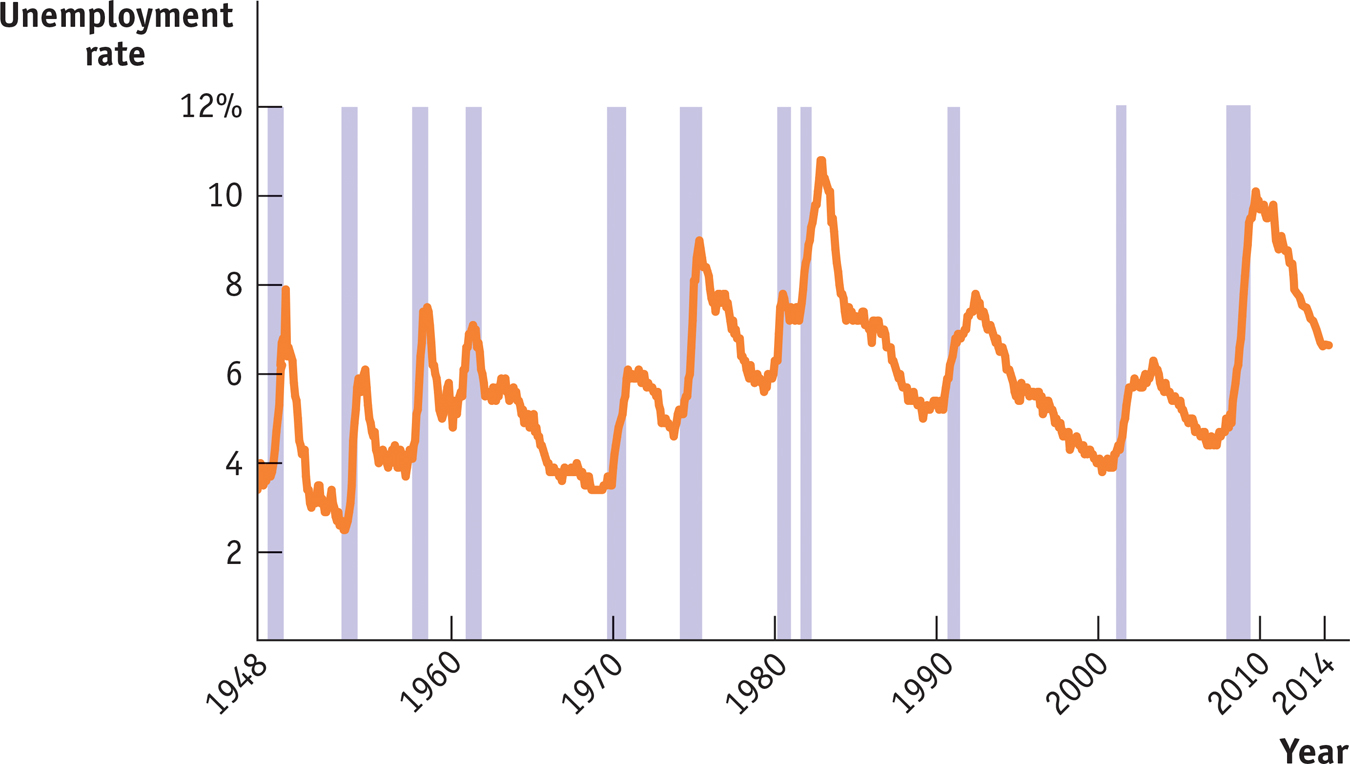The Unemployment Rate
The U.S. unemployment rate in October 2014 was 5.8%. That was a substantial improvement from the situation a few years earlier. In late 2009, after the Great Recession, unemployment peaked at 10%. But unemployment was still well above pre-
Figure 8-1 shows the U.S. unemployment rate from 1948 to late 2014; as you can see, unemployment soared during the Great Recession of 2007–

The U.S. Unemployment Rate, 1948–